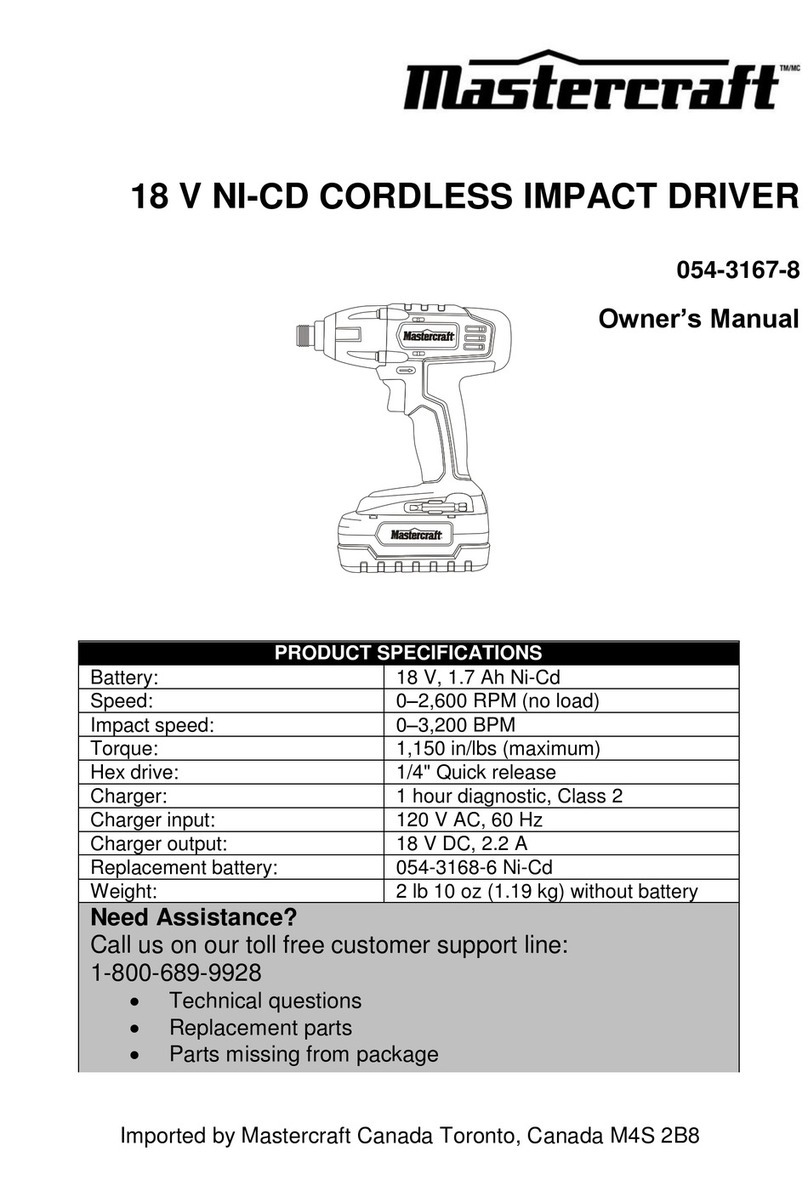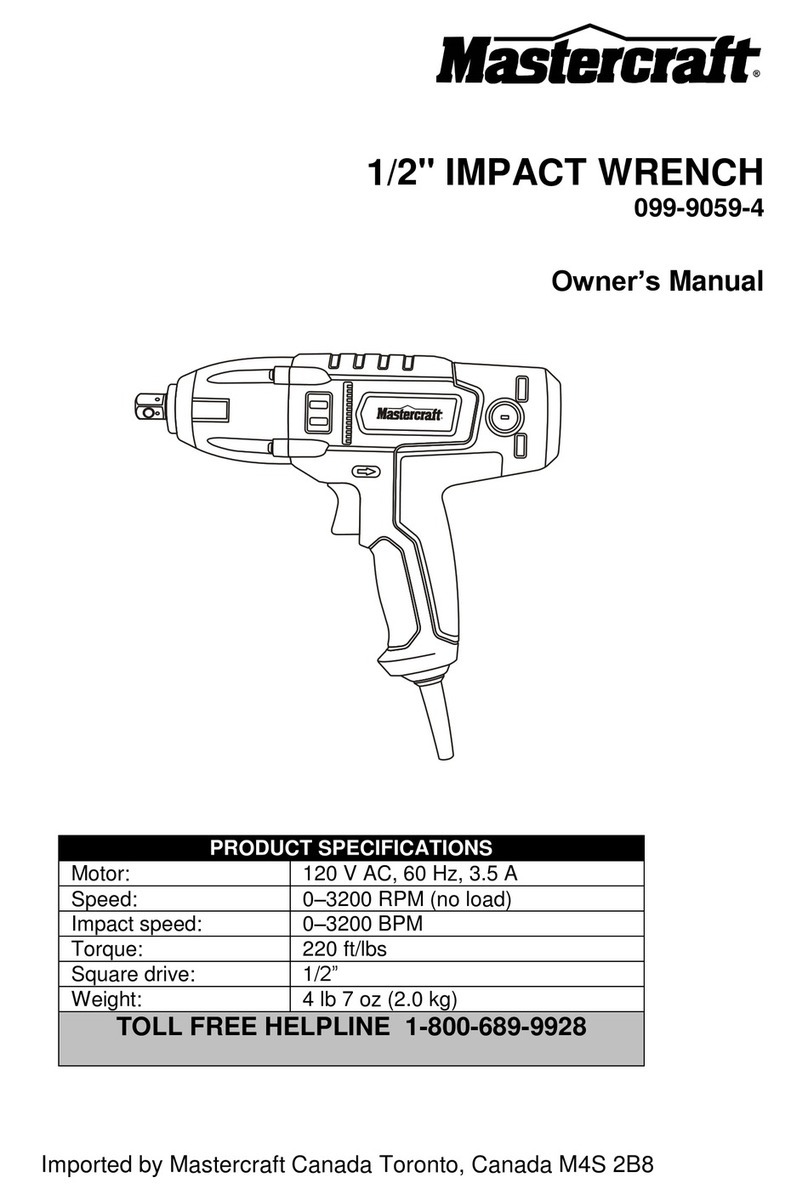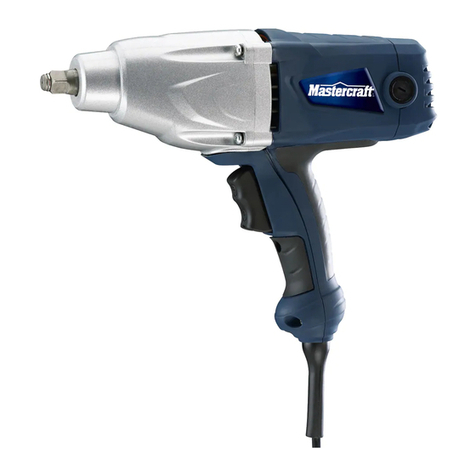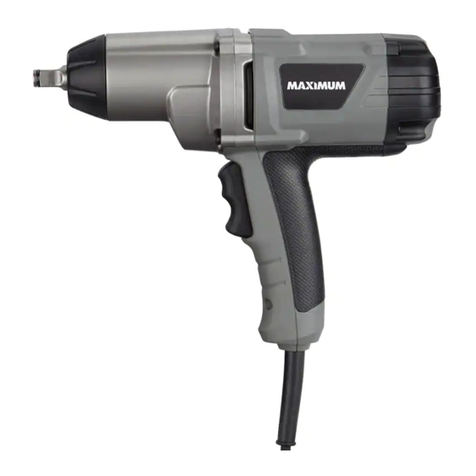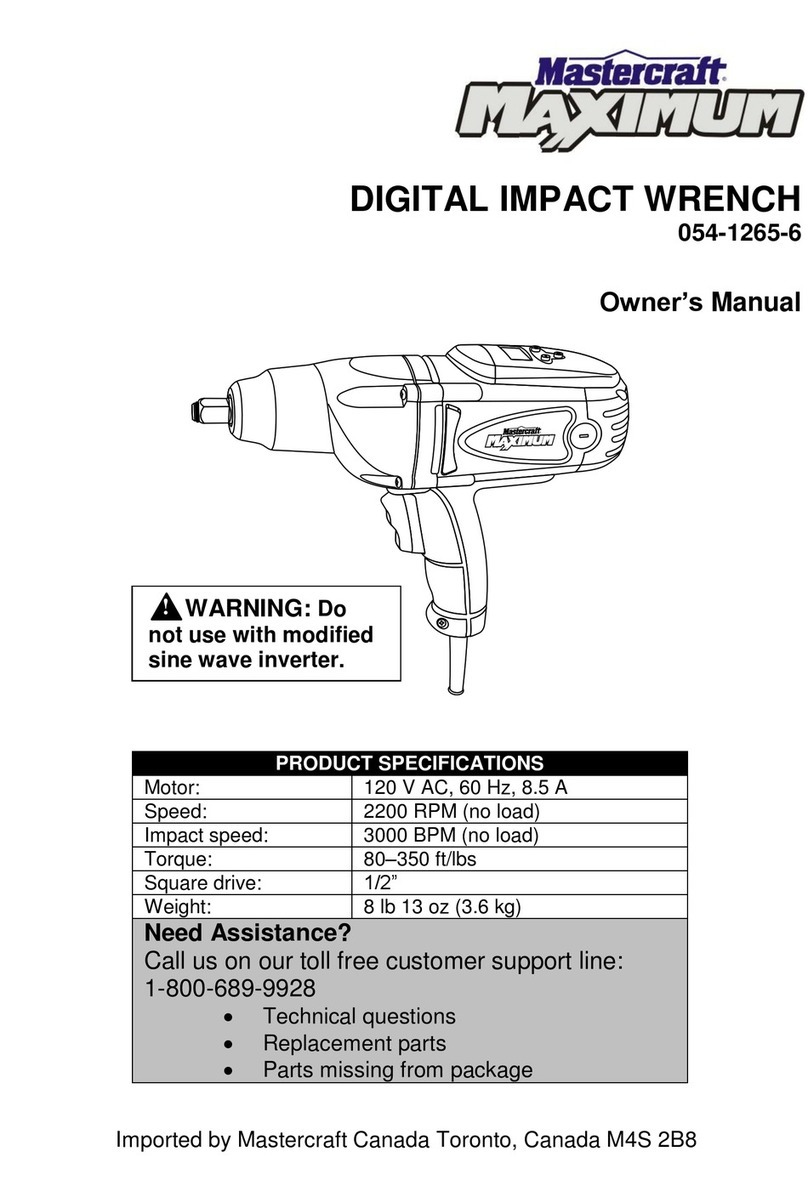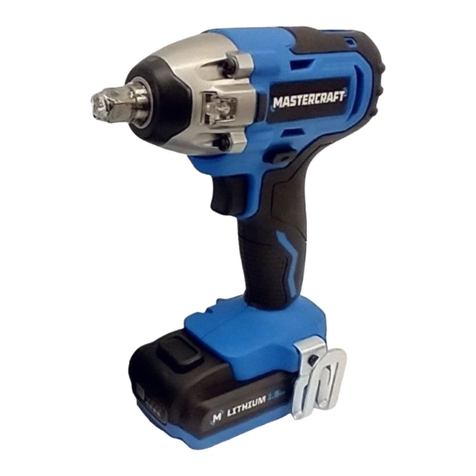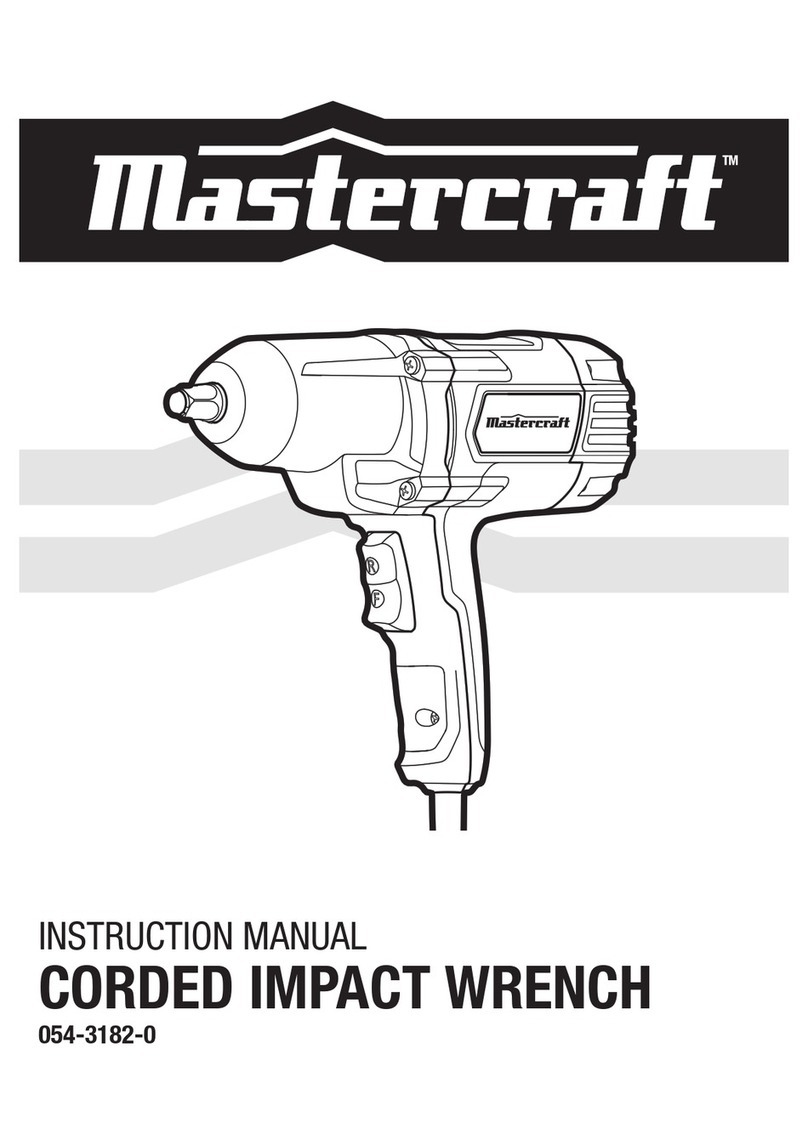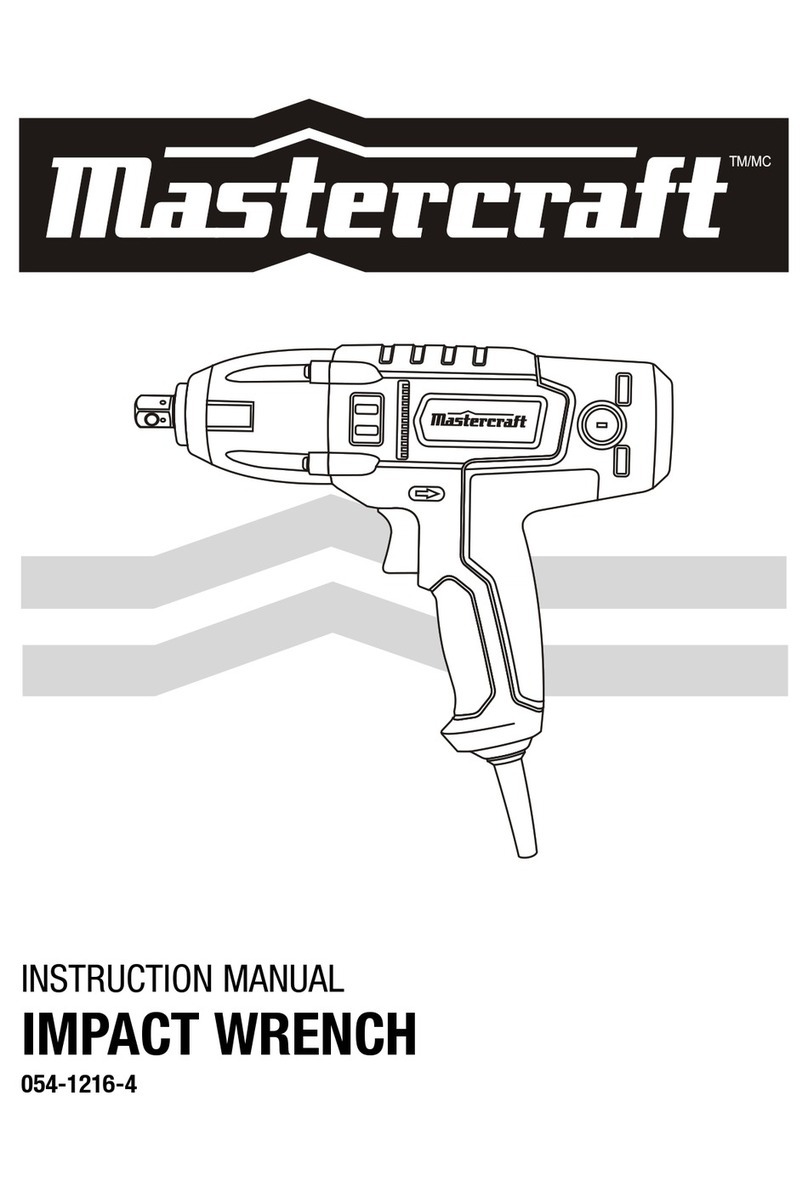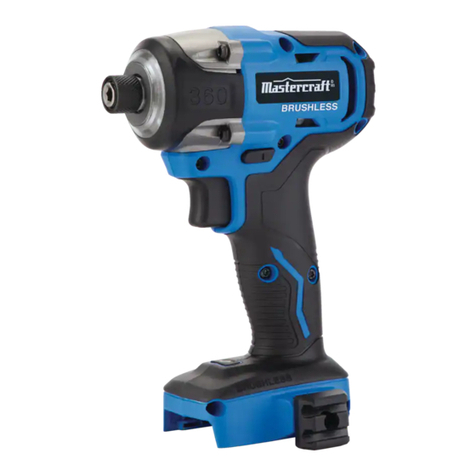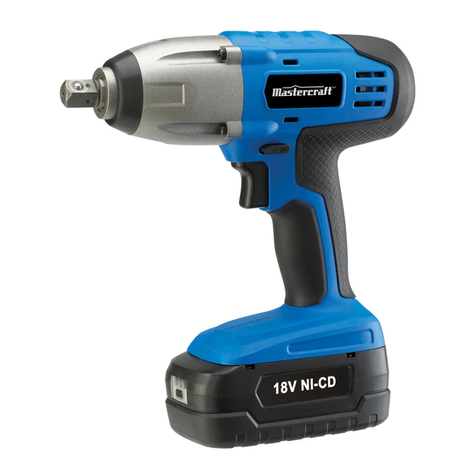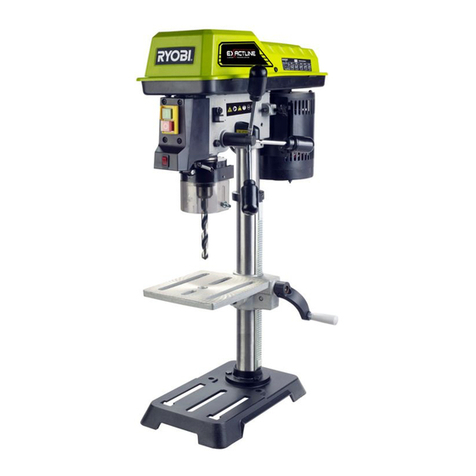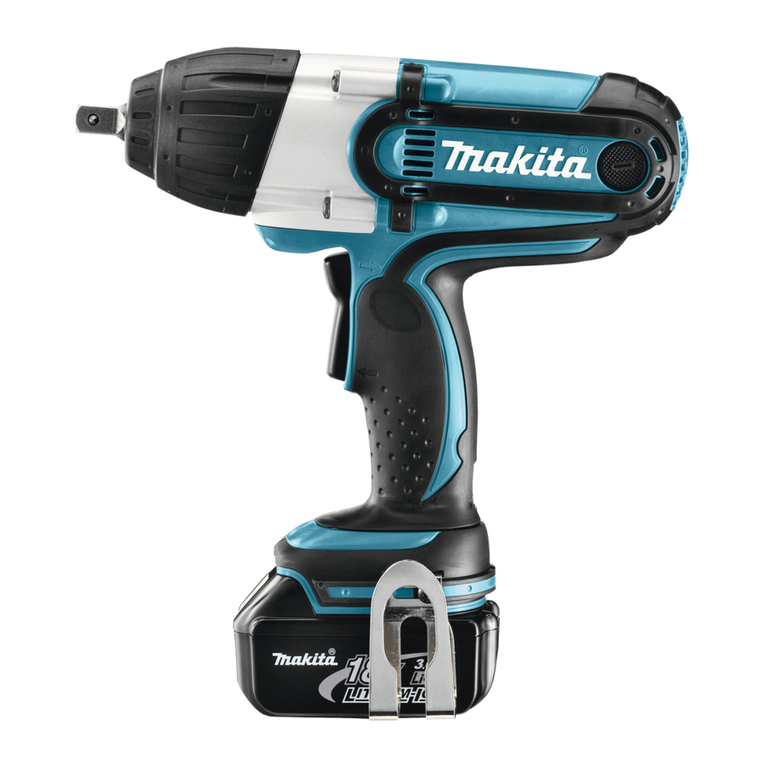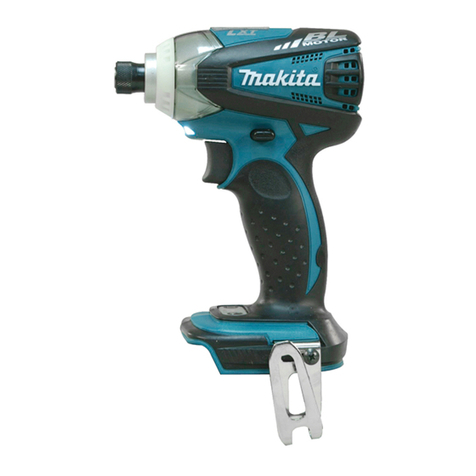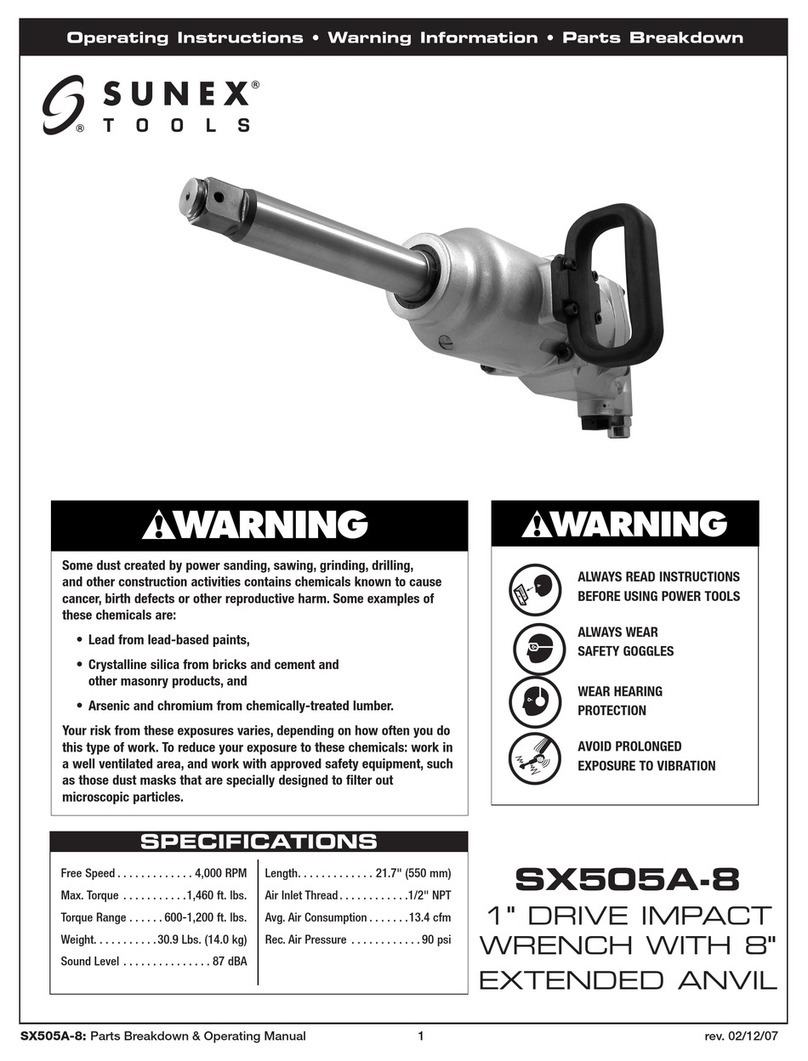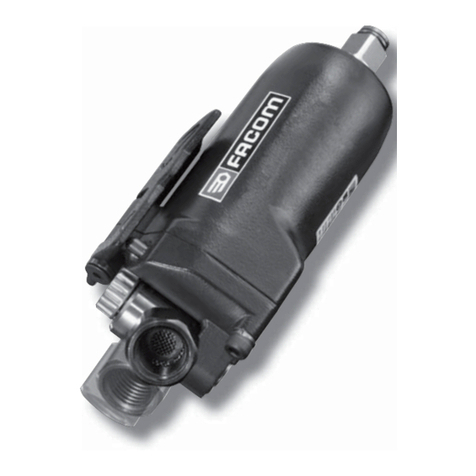WARNING: Know your compact
impact driver. Do not plug in the
charger or install the battery in the tool
until you have read and understand this
Instruction Manual. Learn the tool’s
applications and limitations, as well as
the specific potential hazards related to
this tool. Following this rule will reduce the
risk of electric shock, fire, or serious injury.
Always wear eye protection.
Any power tool can throw
foreign objects into your eyes
and cause permanent eye damage.
ALWAYS wear safety goggles (not
glasses) that comply with ANSI safety
standard Z87.1. Everyday glasses have
only impact resistant lenses. They ARE
NOT safety glasses.
WARNING: Glasses or goggles
not in compliance with ANSI Z87.1
could cause serious injury when they
break.
Always use hearing protection when
operating the impact driver.
Use only impact sockets and accessories
that are designed for use with an impact
driver. Do not use chrome plated sockets
and accessories. Chrome plated sockets
and accessories are designed for hand
use only and MUST NOT be used with an
impact driver. They may shatter and
possibly cause serious injury.
Before each use, check the impact sockets
and accessories for excessive wear or
cracks. Worn or damaged sockets or
accessories may shatter and possibly
cause serious injury. Worn accessories
may allow the socket to come off during
operation of the impact driver.
After installing any accessory in the hex
drive, pull outward on the accessory to
ensure it is properly installed and cannot
be pulled out of the hex drive.
Never use the impact driver as a torque
wrench. Always use a torque wrench to
adjust the fastener to the specified torque.
Keep the impact driver handle and body
clean and free of oil and grease. Always
use a clean dry cloth when cleaning. Do
not use solvents, brake fluid, gasoline or
other petroleum products to clean the tool.
They will damage the tool.
Do not wear neckties or loose clothing.
When wearing gloves, they must be tight
fitting and slip resistant type. Leather
gloves offer the best protection.
Always use two hands when operating the
impact driver. Use one hand on the handle
and the other on the front of the tool body.
Never place your hand so it is touching the
socket or accessory when the tool is
turned ON. Your hand could be seriously
injured.
Always remove the battery from the tool
before installing or removing any socket or
accessory.
Be ready for components to shift when
removing any fastener. The speed of the
fastener removal could cause unexpected
shifting of the components.
